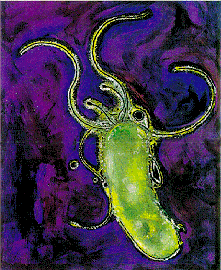References
American Water Works Association. (2006). Waterborne Pathogens (2nd ed.). Glacier Publishing Services, Inc.
Blaser, M. J. (1996). The Bacteria Behind Ulcers. Scientific American, 104-107.
Boren, T., Normark, S., & Falk, P. (1994). Helicobacter pylori: molecular basis for host recognition and bacterial adherence. Trends in Microbiology, 2(7), 221-228.
Helicobacter Foundation, The (2006). Retrieved April 7, 2008, from http://www.helico.com/index.html
Index to Taxa (2008, February 10). Retrieved April 7, 2008, from http://zipcodezoo.com/Key/
Manton, K. G., Stallard, E., & Corder, L. (1997). Changes in the Age Dependence of Mortality and Disability: Cohort and Other Determinants. The Demography of Aging, 34(1), 135-157.
Marshall, B. J. (2008, January 7). Helicobacter pylori Research Laboratory. Retrieved April 6, 2008, from http://www.hpylori.com.au/
O'Conor, C. D., & Smith, D. G. (Eds.). (2003).
Microbial Subversion of Host Cells.
Thagard , P. (1994). Explaining Scientific Change: Integrating the Cognitive and the Social. PSA: Proceedings of the Biennial Meeting of the Philosophy of Science Association, 2, 298-303.
Yamanda, T., et al. (1994), Helicobacter Pylori in Peptic
Ulcer Disease.
